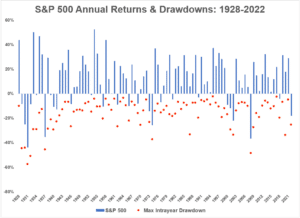I recently watched Madoff: The Monster of Wall Street on Netflix. This 4-episode series chronicles the rise and fall of Bernie Madoff, who orchestrated the biggest Ponzi scheme in Wall Street history.

While I didn’t think the actual documentary was anything groundbreaking, (it hits the typical beats for a documentary and I don’t think it needed to be 4 episodes long) the subject material is fascinating. Bernie Madoff was an American financier and respected Wall Street figure who was at one time chairman of the NASDAQ stock exchange.
Madoff founded and ran a legitimate brokerage business that was very successful and made him extremely wealthy. This makes his decision to start a secret, illegal hedge fund on the side and defraud people out of billions of dollars puzzling and intriguing.
Here’s how it worked. Bernie and his henchman would solicit his investment management services to get investors to invest in his fund. Then Bernie would deposit the money into a single personal bank account. And it would just sit there. No stock trading was ever performed. There was an entire team that would create and send fake investment account statements out to investors each month detailing made-up trades and fake returns inside made-up accounts.
When someone wanted to take money out of their fake account, Madoff would fulfill the request with funds from the bank account and then replenish it with new investor money. Shockingly simple.
And yet, the fund ran for decades without anyone noticing. He was never caught. The scam would’ve gone on even longer if it wasn’t for the 2008 crash when there were so many people wanting to cash out of their accounts due to market concerns and not enough money in the fund account. It was only a short time after when investors realized there were no accounts and their money was gone.
Just before its downfall, the hedge fund’s reported value was $65 billion and had taken in $20 billion of investors’ money.
There are quite a few lessons to be taken from this limited series, amongst them diversifying your retirement savings and not falling prey to seductive, too-good-to-be-true sales pitches. But one thing that stood out to me was how none of the investors were suspicious of the supposed returns they were getting with Madoff.
Madoff attracted new people to invest in the fund by promising them extraordinarily high returns with little to no downside risk. On the statements that were sent out each month to investors showing the fake trades and account balance, they showed returns of 1% to 2% per month, every month. There were hardly ever any negative months.

This is virtually impossible to repeat over any sustainable period of time, let alone multiple decades, and should have been a huge red flag for anyone investing with Madoff. But even investors who were financially savvy and understood how markets work ignored their misgivings because of the allure of easy money. Maybe Bernie knew some top-secret market strategy that no one had ever figured out before and they were lucky enough to be in on it. Sadly, that wasn’t the case.
The stock market cannot go up every single day or every single month. In fact, historically the stock market is only up on roughly 55% of all days that it’s open and down on the other 45% of days.
Here’s a chart of calendar year returns overlayed with the peak-to-trough drawdown in those corresponding years:

Every year there’s red. Even when stocks finish the year in positive territory there are bound to be some hiccups along the way.
There has been a double-digit peak-to-trough drawdown in roughly two-thirds of all years going back to 1928. Only a little more than 6% of the time is the intra-year correction less than 5%. So 94% of the time, there has been a drawdown from the intra-year highs of 5% or worse.
For there to not only be zero negative years, but hardly any negative months, in Madoff’s fund was impossible.
A fundamental principle of investing is that risk and return are linked. You can’t have one without the other. A guaranteed, high-return investment doesn’t exist.
Investing in a concentrated, high-potential-for-return basket of stocks is one way to outperform the market. It’s also an easy way to severely underperform.
You cannot eradicate risk in a portfolio. You can only choose when and how to accept risk in different variations. Doing so will always involve balance and trade-offs.
Allocating more money to stocks gives you higher expected returns but higher expected volatility and a larger drawdown profile. Putting more money into bonds gives you lower expected returns but lower expected volatility and a smaller drawdown profile. Seeking safety in the short term by just holding cash can help you sleep at night now but it also means you won’t live as well in the future.

In other words, investing is hard. If it was easy it would just be called earning money—not investing.
Thanks for reading!

